Parenting in the Age of Trump
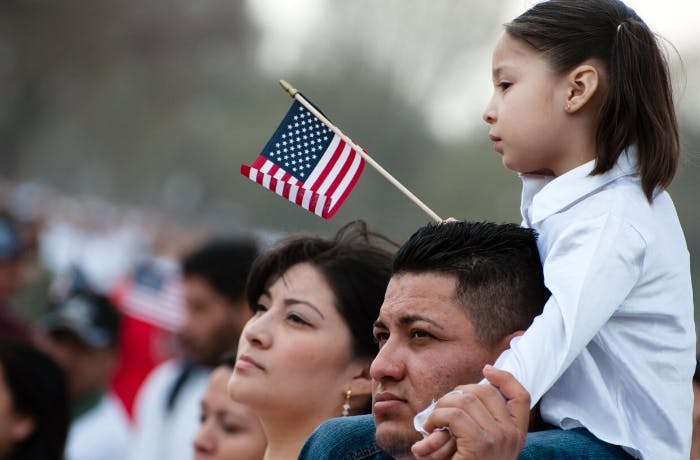
On February 28th, 2017, EmbraceRace Co-founders Andrew Grant-Thomas and Melissa Giraud, along with participating EmbraceRace community members, had an illuminating conversation with our special guest, child psychologist Dr. Allison Briscoe-Smith. Read the conversation and then find more resources at the end.
EmbraceRace: Hi folks. If you’ve been with us before you know Allison already. She’s a child psychologist specializing in trauma and ethnic minority mental health. She’s a professor at the Wright Institute in San Francisco and she identifies as black. She and her partner have two multi-racial children who are black, white and Latino. Allison, it’s great to talk to you again.
Allison: Great to talk to you both and with everybody.
“Broad principles that guide your work as a mom and a child therapist?”
EmbraceRace: I want to start with a broad question, Allison, and probably an unfair one.
When people registered for the call, we invited them to ask their questions. Many did. And we have all sorts of questions — about fostering resilience in our kids and ensuring that bigotry doesn’t take hold in those children; questions of privilege and how we engage what’s happening from a position of privilege; how we maintain hope and safety through all of it. And we’re going to get to some of those questions.
I wanted to start by asking if you have any overarching bits of wisdom to offer. One or two broad principles that guide you in your work as a mom and your practice as a child therapist?
Allison: When I think about principles or approaches to this conversation, I draw upon my experience as a clinician, as a mom, but also from the wisdom that I’ve learned from all the families that I’ve been able to interact with. Families like those that are on the call tonight.
What I’ve learned from them and from my work is, first, that we should begin by self-reflection. Paying attention to who we are, how we think about these issues, how we learned about them, and what we think about them. We’ve got to get really clear with who we are.
Second, we’ve really got to know our kids. I know there’s lots of questions about how we talk to a 4 year-old or a 16 year-old or a 13 year-old. But above all we must remember to think: who is my child? Not only in terms of age, but in terms of temperament, in terms of context.
The other part to pay attention to is all of these conversations about privilege and justice and resistance happen in a context and that context is our family values.
Who are we trying to raise? Who are we trying to be as a family?
It’s important that we are clear on who we are, who are kids are, and also who are we trying to create and be as a family. And that is the template for trying to address some of these questions. Doing the deep thinking on each of those levels.
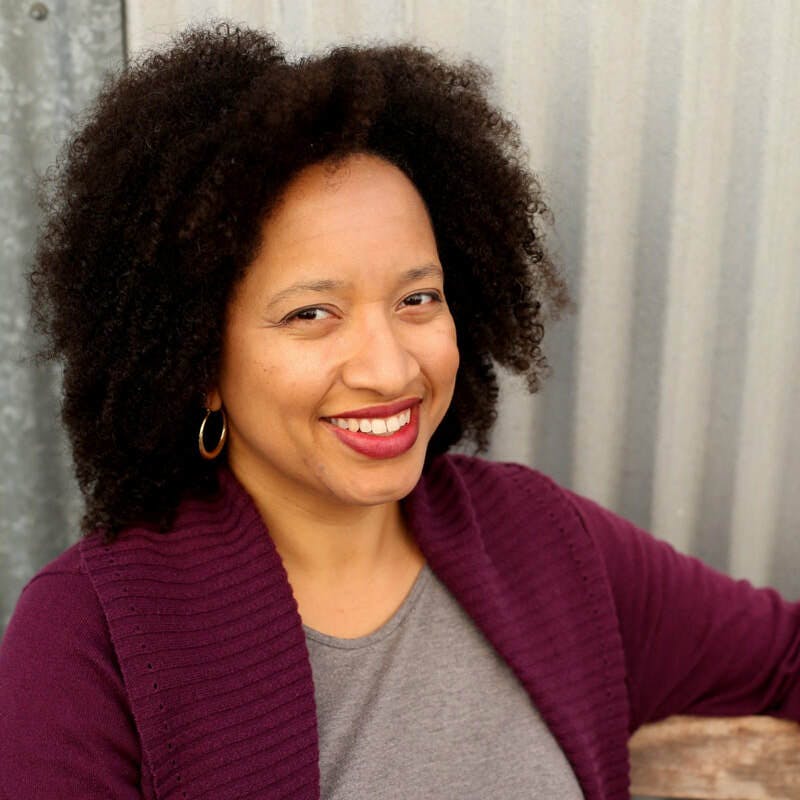
Dr. Allison Briscoe-Smith
EmbraceRace: We had a lot of questions about developmental appropriateness. Do you speak to a 3 year-old or a 5 year-old or even 18 month-old about these hard issues? And if so, how do you do that? I wonder if you can elaborate a little bit on how we might think about that as parents dealing with all different aged kids?
Allison: Sure. It’s important to pay attention to development and developmental capacity. And you don’t have to be a developmentalist or a social psychologist to figure that out.What is your child really capable of? How are they asking questions? How are they making sense of things and what are they bringing to you? There are ways for us to think about attending to those issues. I also often get questions in the context that you mentioned about young children.
People say, you know, I couldn’t possibly start talking to my three year-old about race, she’s too young. But I really want us to think about how we are actually every moment of every day teaching about race.
“How to shelter my child from the hate that is directed at our Muslim community?”
EmbraceRace: Let’s go to your questions. Go ahead, Nabeela.
Nabeela: I’m just wondering, how do I shelter my child from the hate that is directed at our Muslim Pakistani community by virtue of our background? It’s become acceptable to discriminate. How can we shelter our children so that they don’t have to be concerned about these things and do normal things that other kids do?
EmbraceRace: Nabeela, I’m so sorry you have to even be asking this question. Can you say a little bit about what you’re seeing, what you’re feeling?
Nabeela: Well, you know, there’s discrimination at all levels. There’s the not-so-subtle discrimination that we see at the policy level where you’ve got the Muslim ban, where Muslims have difficulties entering the country, even those that have green cards, and Muslim citizens are being harassed.
But then the children are of course seeing all of this, they’re discussing it amongst themselves, and we can’t shelter them from all of that public information.
And then there’s the discrimination that’s taking place where in fact some teachers who consider themselves part of the “conservative” movement are using this opportunity to discriminate against students based on their beliefs.
Obviously, it’s very difficult to prove that it is motivated by discrimination. But it’s just sort of all around, this pressure. The children are being subjected to this overt discrimination and they’re thinking to themselves, what have I done to warrant this?
And they haven’t done anything! How do I raise a healthy child given that all of this hate exists around them and is directed at them?
EmbraceRace: Fair question, Nabeela. Allison?
Allison: I was wondering if I could ask you, what are the things that you’re currently doing to try to help them navigate this really complicated and unjust situation that your children are facing?
Nabeela: The difficulty I face is that I do not want my child to be raised thinking she’s a victim. I do not want her to have a victim mentality. I want her to feel empowered to be able to make decisions and choices in her life and that she can actually exert some sort of self-power in this world.
So I am telling her to be polite but be confident in speaking what they feel when other students say something to her. To talk to people in authority about it, not be afraid to answer back if someone says something. And I also tried to tell her that not everyone is hateful. Just because this happens to be the general mood in the country presently it isn’t everyone’s attitude. But I just feel kind of helpless, really! I don’t really know what kinds of messaging I should be giving.
Allison: I think you’re helping all of us think about the things that we can do as we face oppression. And one of the things that you help to lift up is that what’s really important and a value for you is not staying in the victim position but rather teaching your children how to be resilient and resistant.
It sounds like you’re doing that, by giving them this kind of access to strategies as to how to fight oppression. And those strategies may be something simple in terms of a script that we give our children to say when they hear something. Or a person they can come to and talk about this.
I heard you give your children strategies. When something happens, find this kind of an adult. Or speak up about it. Or it’s important for us to respond with kindness and also to be assertive ourselves. I really hear a sophisticated strategy for resistance building with your children. And I think you’re also tapping into something too in terms of feeling like isolated, that we as parents need to come up with all the right answers.
But I also would invite folks to be in community with us. How are other people who are Muslim dealing with this? What are they saying? Are there groups that give opportunities to connect on that? But also, how are those of us that are not Muslim, how are we actually standing up to help as well?
The invitation for people who are not Muslim is to be paying attention too. We can talk about this in terms of allyship but we also have to be thoughtful about making sure that you don’t feel alone in doing this. Because if we leave you alone in doing this then we are complicit in the oppression.
I think another piece you raised up is: what about the stories in your own family and community about resistance/resilience? So, not pointing to images of victimhood but actually, say, look at all the people that we know that have survived things like this before and are doing really well.
Look at how I’m doing it, which may not be perfect, but to point to that — you are resisting as well. And giving kids proximity to those kinds of living examples of living resistance and resilience is really important. Connecting up with stories and pride are very important as well.
“How do we reassure kids when we don’t know how bad things will get?”
EmbraceRace: Nabeela, thanks for that question and best of luck.
So, not surprisingly, we got quite a few questions from people — and especially from parents and from teachers — who are very much associated with members of groups who are being targeted.
In Nabeela’s case, she’s especially concerned about her Muslim identity, her family’s identity as Muslim, her children’s identity. We also got lots of questions about immigrants — undocumented immigrants, but also documented immigrants.
And one in particular from Renee I wanted to read for you here. Her question is, “how do we reassure kids when we don’t know how bad things will get?” And then she adds some context. She says, “My husband is not a U.S. citizen and the anti-immigrant sentiments that are being stirred up are personally concerning.” Any wisdom there, Allison?
Allison: We can’t promise that everything will be OK because we don’t really know that’s true. And I know that it’s a hard place to be in, but let’s think about other places that we’ve had to do that within the context of family — like perhaps in the context of someone who’s ill or a move or a divorce. We actually have places we’ve practiced thinking about how not to over-promise that something perfect is going to be the outcome.
And, going back to the previous question, we also need to present a strategy to help kids cope. So helping them think about where we are right now and what we’re doing to try to be safe. What opportunities we have to try to be safe together, to point to those.
Kids are going to be nervous and afraid and have big feelings.
So you need to build up a resilience in kids to handle difficult things. They’re going to face difficult things and we’re going to have to build up their resilience by being there to support them as they do that.
“How to explain ICE raids to my brown daughters?”
EmbraceRace: Thank you very much. We’re going to go to another question. Jess, are you there
Jess: Yes, I’m struggling with how to explain the ICE raids to my brown six and eight-year-old daughters so that, first of all, they don’t become completely terrified. But also, so that it doesn’t become a conversation about us and them and instead stays inclusive. For example, they started asking “So could this friend be deported, and how about this friend, but that friend can’t be…” And I just didn’t know how to handle it.
Allison: So how have you begun to talk about the ICE raids so far? What kind of language are you using?
Jess: Well, I didn’t do a very good job! I mean I quickly went to, we are all in this together, and we stand up for our friends, and we adults are making sure that kids are safe. I really struggled when it started feeling like it was getting specific to certain kids.
Allison: Is there a worry that kind of separating out ‘us’ and ‘them’ or ‘this kid’ and ‘that kid’ would come back to those children? I want to understand a little bit more about the worry behind that.
Jess: Well, I want it to feel like kids aren’t targeted or separated out but that we are all working together to support each other. And I know that’s not the case with these raids, but I don’t know how to present that to them in a way that doesn’t become terrifying and dividing.
Allison: I hear the value that you’re articulating that we’re a community and that we are working hard to make sure that people stay safe, and there are grownups working hard to make sure that kids stay safe. And I think those are great, age-appropriate messages to be sending kids to help give them a structure. You’ve also identified that the truth of the matter is that kids are being targeted and people are being targeted.
And what I’ve learned, actually from Melissa and Andrew, is that there’s an opportunity in this to have a conversation about privilege, even with young kids, and how we can use privilege. I’m making an assumption but perhaps your kids, while brown, aren’t immigrants or aren’t dealing with that piece. Then the idea is to talk to them about how they don’t have to worry about that but other friends do. So how do we want to be helpful to those other friends? What can we do to stand up for those friends? Again it’s connecting up strategy, giving them a strategy to negotiate these difficult places.
I think what your kids were doing by identifying the different kids is trying to make sense of who’s at risk. Of course that’s hard and complicated. I’m a big fan of narrating our discomfort, saying something like: You’re asking some really good questions. But mama really has to think about this a little bit more because I want to make sure that you don’t get too scared and that we’re still able to be good friends to people. I use a lot of those techniques to buy more time.
I also want us to be compassionate to ourselves as parents because I’m hearing that you’re actually doing a really good job of trying to think about what’s going on and trying to support your children in being good allies. And you got stuck in a place that’s complicated because … it’s complicated!

EmbraceRace: Let me interject one question. Jess’s kids are 6 and 8, same age as our daughters. How can we help them, at that age, support their friends while also understanding, first, that there are limits to what young children can do to be truly helpful, and, second, that in some cases too many questions can actually be threatening to kids who might be undocumented.
Allison: Young kids, and certainly kids that age, are really oriented around fairness. And for older kids it’s the construct of identity and peers: what does it mean to be a good friend?
And I think many of us as parents have already had to have a conversation about what it means to be a good friend? What does it mean to have empathy? What does it mean to be kind? Many of us have that language in some shape or form.
And you can take it a step further and say, what does it mean to be a good ally or supporter or person, period. But the basic construct is, how would you want to be a friend to someone who’s in distress? That’s what we’re talking about, right? Who’s scared and who’s got bad things happening?
It’s an opportunity for us to highlight the conversations that we’re already having, and to use it to draw it back to this particular piece. So, how is it that you’d be a good friend to someone having a hard time? And this hard time that they’re having is that they’re scared and they’re unsafe and something bad might happen. What would we do? What would it look like. What would it feel like. What are the things that we wouldn’t do? How do you step in when someone’s teasing someone?
I want us to capitalize on the conversations that we’re already having.
EmbraceRace: Jess, how is that landing?
Jess: Yeah, bringing it to a level where we’ve already been feels a little more grounding, because this is all so unmooring for all of us. And I also think you’re right on with that it taps into privilege.
There’s a lot that as you said is unchartered. That’s where it gets scary. It’s great when it’s grounded in, how do we be kind to others, how do we show up for others — that they can get. And I think it’s really helpful but I think there is this overarching feeling of … the unknown.
“How do we engage, and help kids engage, family members with whom we profoundly disagree?”
EmbraceRace: Jess, thank you very much for the question.
Allison, let me ask you another one that flows from the conversation we’ve been having. Again it comes from one of our registrants. How do we help our children and ourselves foster a resistance mentality that doesn’t turn into hatred or fear mongering?
As we know, the country is deeply polarized in some ways, not least around the Trump administration, some of its policies, some of its rhetoric. And there are questions about how we, for example, even as adults, engage family members with whom we profoundly disagree and who profoundly disagree with us? And maybe even trickier, how do we help our children, especially young children, navigate that? It could be grandparents, an uncle, whomever it is. As a rule, we want our children to have good, strong, loving relationships with those folks. Any wisdom there?
Allison: Again, I route back to, how is it that we as families have had to negotiate across difference? Sometimes we don’t! Sometimes the big conflicts end up in rifts and ruptures in our relationships, we know that also happens. But you’re asking, how do we engage not only across difference but also engage across differences that we feel about morals and ethics as well?
First of all, we need to do our own thinking about it while being aware that kids are watching us negotiate that. The other piece is: how we want to support them in engaging with different opinions?
Start where kids are. How do we disagree? What is it like to disagree? How do we disagree and come back? How do we try to remain with our integrity? And these are again things that we do with small kids. So how do you disagree with your sister? How do you disagree with each other?
We have a saying in our family: “Don’t yuck my Yum.” So that’s when one person says they like something and the other person says, “I hate it!” What we’re trying to build up is a conversation about how we engage in our differences. You’re posing a question that we’re all struggling with and I think the answer is maybe we can struggle with this together. Not separately. We’ve got some basic language that we can use with kids.
It starts off with, how do we disagree? Maybe if we had had more attention to that when we were growing up we’d be better able to negotiate these differences! But I think it’s a great space for us to talk about it amongst ourselves and adults first to try to figure it out.
EmbraceRace: That’s a great answer to a really tough question. And it occurs to me that it’s a lot easier to do that if no one you’re close to is likely to be deported or likely to be put on a registry. When the stakes and consequences are that serious and affect people very close to you, bridging the gap is especially hard, right?
Allison: We have to face the reality that if the stakes are that high and you’re on the receiving end of the discrimination, this is where we know that families rupture. And so that’s not the outcome that we have hoped for but I bet you everybody on the call either has that one person in the family they don’t talk to anymore or knows of someone.
But I also hope that repair can happen as well. And perhaps it’s due to the experience of being close to another experiencing that level of oppression and discrimination that people’s minds can change.
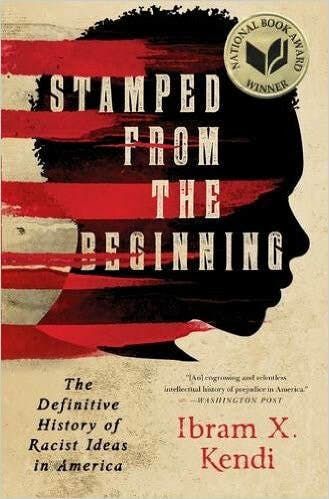
Ibram Kendi has a great piece about racial and racist progress based on his book
“How do I balance emphasizing our history of social advance against the reality of progress lost?”
EmbraceRace: Thank you Allison. Greta, we’d love to go to your question.
Greta: Thank you. How do I balance continuing to emphasize the history of social change with the reality of Trump et al turning back progress? My son is 11. But he knows a lot about current events and he knows the history of the advancement of civil rights slowly, over time. But with this being uncharted territory, a new moment, how do we balance that?
Allison: What I hear you also talking about, the value you’re communicating with your son, is that history is really quite important. It’s an opportunity to look at moments in history where there were setbacks and where there were fights that felt like they were lost. And what did people do to overcome that?
I think what you’re actually providing is a great invitation to get rooted in our history, and to see that people have been fighting these fights for a very, very, long time and they have felt like progress was made and no progress was made. They have come to war. But there’s an opportunity for us to think through the long arc of history and to be paying attention to where it’s bending.
I also hear you struggling with, and a lot of people are feeling this, a kind of hopelessness. But I actually think that by engaging deeply with our history we can benefit from the wisdom of folks who’ve also been hopeless, and see the changes that have been made. I might just be an optimist but I think that your sense of attending to history is exactly the right thing to be doing.
EmbraceRace: Greta, how have you been dealing with it so far and what’s your son making of these times?
Greta: He’s watching. You know, I mean we’re involved in organized protests. We share similar reactions to the absurdity. And he has that sense of wide-eyed astonishment: how can this be happening? If people committed crimes why are they not being punished? I think we’re just sort of fumbling along together, sort of minute by minute. That’s how it feels.
Allison: I think it’s a great place to go back in history. And as an 11 year-old your son is in this moral development phase, asking: don’t bad things happen when you do bad things? Aren’t there consequences? And part of our development is around understanding, hmmm, that’s not how it works.
All of us can probably remember that sense of when we came into awareness that life isn’t fair. That’s part of that experience. How it is that we help support our kids in still fighting for justice in the midst of that. Again, I think the invitation to cull from stories of history and the folks that have been set back and still went forward is a wise one.
Greta: Thank you. Wonderful. Thanks so much.
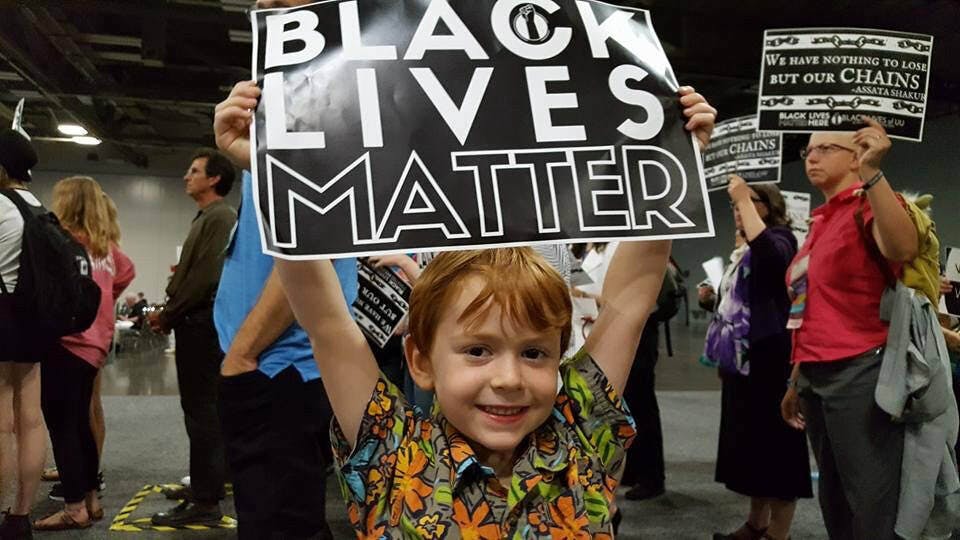
Where do white people fit in the struggle for justice? How do we talk to white kids about that?
EmbraceRace: Let’s go to Andrew.
Andrew : So the question that I have is, as a cis, white male, where do I fit in with this in regard to a 10-year-old daughter? Similar to the last person, we certainly have been part of a lot of protests.
We have some neighbors that we’re very close with who are a biracial and bi-religious family, including a couple of very new green card holders. And she’s worried about what might happen to them. I’m also worried. But I feel like I am somewhere in a weird no-man’s land of being conceptually a part of the class of people in power but feeling completely detached from them.
EmbraceRace: It’s a great question Andrew. Let me just elaborate a little bit with reference to a similar question with a slightly different cut that someone else asked which was, a white woman with white children wanted to know how she can talk to her kids about the fact that, from her perspective, many of the people promoting the racial challenges she sees look like them?
Allison: The first thing I would say is to go back to that idea of reflecting and doing one’s own work. There’s a group called SURJ, Standing Up for Racial Justice, and it’s a group specifically focused on and for white people. It’s focused on exactly these questions that are being posed, where does one stand, how does one participate? What does one need to do? How to reflect upon one’s own privilege and how to leverage that?
I direct folks to take a look at SURJ materials. It’s a great opportunity to begin to do or continue to do the work beyond protesting. The work does need to be deepened and people do need to think about and pay attention to their own white racial identities and it’s a great opportunity to leverage privilege in terms of thinking about allyship. I know allyship is a fraught term, but thinking about how one ought to provide support and how not to be co-opted by a system of oppression.
In terms of talking to kids about it, I think we talk about fairness and justice and use that to build up and structure our conversation about privilege.
Remember: talking about privilege isn’t to make people feel bad, but rather an opportunity to think about paying attention and think about how we can actually operate according to our values — our ideas of justice and fairness and what we want to happen. Helping kids get complicated and, sure, they’ll say look at all the people that are doing “bad things,” but look at all the people that are doing good things. It’s something that we can and have done with our kids in other contexts too.
Andrew: I appreciate particularly the reminder that being in a place of privilege also gives us the chance to model values that we want to see our world bring about.
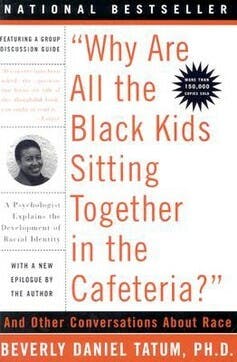
“How do we model integration in our homes and in our communities?”
EmbraceRace: Karen, we’re coming to you.
Karen: My question, thinking in terms of a very well-known book, Why Are All the Black Kids Sitting Together in the Cafeteria? by Beverly Daniel Tatum, is: how do we model integration in our homes and in our communities? I live in a community that seems to be fairly diverse compared to the rest of the state. However, segregation is still very apparent.
Allison: That’s a great book and a great resource to offer up. And the thing that I take away from that book, which speaks to why it is that kids group together according to race, is both an understanding about how normative that is, and how it’s actually OK. It’s OK if it’s a self-selected opportunity to connect across shared interests and shared likes. And we also have to engineer spaces that allow us to move beyond ‘integration’ and move into places where we’re actually working together and collaborating together.
How do we find opportunities to put forward goals that we can all come together for and leverage our talents? Is there a school workday? Or is there an opportunity to bring families together for a particular kind of cause? Is there some sort of community opportunity to bring folks together to think about, strategically, things like outreach and accessibility to make sure that we’re inviting everybody?
I think you can also start off small in terms of noticing who your kids have playdates with. Are there opportunities to reach out across those playdates? Kids notice who their parents are with, who comes over for dinner? Who do we have interactions with? Start off small and in conscientious ways, reaching out and building community. I think that we’re able to do the both/and of knowing that self-selected groups happen.
And we also have the opportunity to build up community that isn’t just diverse but actually holistically integrated. We have to start by looking at ourselves and asking ourselves some questions about who we’re spending time with.
Karen: I think that was an excellent response and I hope to be able to use that response in promoting discussion in our community. So thank you.
“How do we support our kids to ‘stand in’ their values?”
EmbraceRace: Here’s a question that I really loved. What resources are available to help kids have good conversations amongst themselves when no grownups are around? We can send out resources.
But I actually want to tweak the question a little bit, Allison. Our kids, certainly once they’re school-age, spend a tremendous amount of time with their peers, and much of that time is without adult supervision or even adult company. Some of that interaction we would be pleased with, no doubt, if we were there to hear it. And some of it we wouldn’t be pleased with.
So, imagine that an 8 year-old, a 10 year-old, a 5 year-old, comes to you and says, you know, I’m a little bit concerned about what my friends are saying. I don’t agree with it. It’s not the way we talk about these issues at home and yet they’re my friends and I don’t want to get into something that will create tension. How do we support our kids to really ‘stand in’ their values?
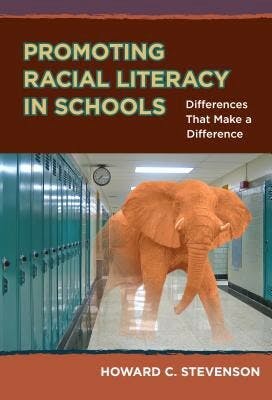
Allison: I think part of that is to go back to how we are really supporting kids and understanding what their values are, what our values are as a family. Through both explicit conversations about our family mission or motto. Or through the way we behave.
There is one resource I can think of from Howard Stevenson. Howard Stevenson provides a model of how to support kids and he has one particular model for how to support black kids in predominantly white spaces. And the way he does that is by protecting kids with stories of resistance or resilience. But he helped kids by role playing or scripting. Here’s what you can say if a kid says this; let’s try it on.I know that feels ‘hokey’ to me as a parent. But it’s helpful because we’re giving our kids practice. So, let’s practice together. What if someone says this? If you think about it, it’s somewhat the language that we try to give our kids in the context of how to say no to drugs or how to think about issues of consent. So why couldn’t we also bring that into a conversation about race?
We’re not going to be able to watch them all the time. But if we can give them practice and support, that may be one option. And also, especially as kids get older, we can help them reflect on how the conversation went. And thinking about how they might want to do the conversation differently.
Where are we headed?
EmbraceRace: Allison, as someone who interacts so much with kids, you’ve really been at the front line of seeing what kids of different ages are thinking, how they’re responding to what’s happening.
On one hand, many of us are very concerned about Trump, his rhetoric, and some of the policies his administration is already pursuing. Some of these concern racialized, life-and-death issues. On the other hand, under Donald Trump’s campaign and governance what were once ‘dog whistles’ — the use of code words to signal race and manipulate people — have become explicit. And maybe that’s a good thing: it’s undeniable and that gives us greater opportunity to engage this stuff head on.
Through your engagement with kids, are you getting a sense already of what the likely net impact will be?
Allison: Well, more than anything I’m hearing the concerns about what the impact will be. As we heard in the first call, concerns about how will my children fare, will they be seen as a victim? I’m definitely hearing those kinds of concerns. I’m also hearing concerns from kids as well about how to make sense of people doing things that I disagree with.
But maybe I’m just an optimist. I’m really hopeful that if we continue to step up both dialogue and actions around resistance, perhaps we’ll be able to create a generation of folks that haven’t been dog-whistled to, but rather are very clear about what oppression is and how they can fight it. Perhaps we’ll have a generation of folks that are really quite sophisticated, not only in dialogue but in action and in crafting a resistance.
I’m hopeful in part because of the conversations that I hear, in part because of the questions, in part because there are people at 10:00 at night who are engaged and listening to this! So I sit in a really unique place of getting a chance to hear parents who are determined to ensure that the world is a just place.
How do we pull teachers and schools into the racial justice conversation?
EmbraceRace: I hear you. We have a number of questions and again, you’ve spoken to this in pieces but I wonder if you could pull it together for us, a number of people asking for a strategies for bringing teachers along in that conversation. For example, as a parent who shares the kind of concerns that folks on this call have mentioned and might be concerned about whether or not the teacher at school shares those values and is acting on those values. Do you have any general wisdom on how to approach schools?
Allison: Step one is to be really empathetic for the difficult position that many teachers are in. Teachers have to negotiate the opinions and attitudes and the requests of, say, 30 to 40 different folks and that can be overwhelming. Schools might have particular approaches as well. I think the bulk of my work has been teachers asking me: How do I do this? I want to have a language and a strategy for engaged empathy.
I’ve had the opportunity to do this work with teachers across the Bay Area, which some consider a bubble. But resoundingly, I hear that teachers want help in how to talk about issues of racial justice and they feel silenced, told that they can’t talk about this. So that’s step one.
Number two is to think about how to actually get involved with the school. Is there a PTA, is there a site council? Is there an opportunity to have a conversation? What is the school’s stance on racial justice? Do we have one? What is the school’s stance on immigration? Do we have a stance? What would it take to have a stance? What about parents who are interested?
I also heard questions about how to support folks experiencing immigration-related stress? What about the opportunity to do a coordinated resource share at a school? And that is also an opportunity to engage with teachers, administration, and staff as well. That can be complicated because there are people with different opinions in schools. And that’s an opportunity to bring folks together because there’s probably someone at school who shares your opinion. And it’s an opportunity to engage with teachers on these topics.
Also think about whether you have a one-on-one relationship with the teacher? Can you talk about this in a parent-teacher conference? And can you begin to have these kinds of conversations we were talking about — difficult conversations with family members — with teachers as well? There is great opportunity to engage our schools and have schools be locations for this rich, complicated dialogue.
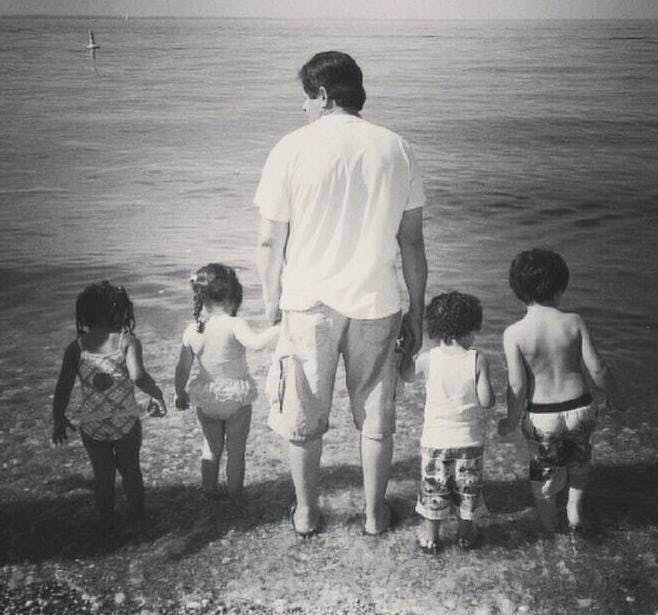
“How do you encourage your child to speak up when grandparents make ignorant comments?”
EmbraceRace: Earlier we asked the question about dealing with specific family members or extended family members who hold very different political and social views with the stakes seeming so high. I have a question here that really gets to this issue of being challenged to have in the moment and difficult conversations.
The question is simply this. How do you encourage your child to speak up when grandparents make ignorant comments? It’s obviously not just grandparents, but in the moment something has happened.
Somehow we all think about a holiday, some family get together. So how do you support the child if the child is in that situation? And what do we do not just as adults with our parents, but with our parents when a child is present? That adds a wrinkle.
Allison: I can’t promise a right answer to that! It gets really complicated and you need to pay attention to family dynamics and also cultural dynamics — is it OK to speak up to an elder? I definitely know and work in communities where it’s not OK to disagree with an elder and where it would be horrifying in any context for a child to disagree with an elder.
But I also think part of that is thinking about, if we’re present, what our role is and how/what we model. And can we practice or have a script or figure out how to intervene.
Part of it is actually for us as parents to do the work of knowing who our family is and what kinds of conversations we can anticipate. So if we know that we’ve got that family member that strongly disagrees with us, how will we make Thanksgiving work? What is it that we want to convey? What is it that we want our children to convey? Be thoughtful about who we want our kids to be in those moments.
We practice, role play, script or be explicit about what we want them to be able to say and how we want to be able to act as well. I appreciate how complicated that is and even doing that doesn’t mean a great outcome will emerge.
Mentioned and Related Resources
For caregivers:
How to talk to your kids about Donald Trump, Dr. Allison Briscoe-Smith, The Greater Good, April 13, 2016
Rubbing Off, Dr. Allison Brisoe-Smith, The Greater Good
Racial Progress is Real. But so is Racist Progress by Ibram X. Kendi, NY Times — A way to think about historical forces, progress and setbacks.
Promoting Racial Literacy in Schools: Differences That Make a Difference by Howard Stevenson
Why are all the black kids sitting together in the cafeteria? by Beverly Daniel Tatum
Standing Up for Racial Justice (SURJ) — National network of affiliated groups and individuals organizing White people for racial justice. Also check out SURJ Families for resources targeted at White kids and families.
For kids:
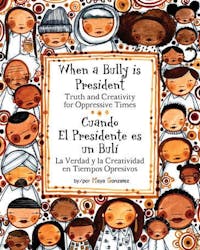
When a Bully is President- Truth and Creativity from Oppressive Times
Maya Gonzalez
When a bully is president: Truth and Creativity for Oppressive Times/ Cuando El Presidente es un Bulí: La Verdad y la Creatividad en Tiempos Opresivos, written and illustrated by Maya Gonzalez, for kids 7 to 10 years old “Self-Care for Kids! A children’s book to talk about current and historical oppression and bullying in the United States while focusing on the important role kids can play using creativity and self love as a base to develop strength during difficult times.“ Allison says “I recommend all of Maya Gonzalez’ work!” Melissa says, “ Our kids loved this book and were inspired to draw themselves as part of the resistance as a result.”

Max and the Tagalong Moon
Floyd Cooper, for kids 3 to 7 years old
“Max loves his grandpa. When they must say good-bye after a visit, Grandpa promises Max that the moon at Grandpa’s house is the same moon that will follow him all the way home ... A gentle, comforting story that will reassure children that those who love us are always with us.”

The Invisible String
Patrice Karst and Illustrated by Geoff Stevenson, for kids 4 to 8 years old
“Specifically written to address children’s fear of being apart from the ones they love, The Invisible String delivers a particularly compelling message in today’s uncertain times that though we may be separated from the ones we care for, whether through anger, or distance or even death, love is the unending connection that binds us all, and, by extension, ultimately binds every person on the planet to everyone else.”
Allison Briscoe-Smith



